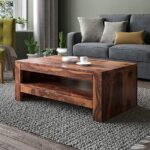A well-designed deck is more than just an addition to your home—it’s an extension of your lifestyle. Whether you’re dreaming of outdoor dinners with family, summer barbecues with friends, or a peaceful place to enjoy your morning coffee, building a deck offers both functional and aesthetic benefits. As a long-term investment, deck construction can enhance your home’s value, expand your usable living space, and create a relaxing retreat right in your backyard.
If you’re considering a new deck, here’s everything you need to know to get started—from planning and materials to hiring a contractor and maintaining your deck for years to come.
Why Build a Deck?
Decks offer numerous advantages for homeowners, including:
- Outdoor Living Space: A deck creates a comfortable space for dining, entertaining, or simply relaxing outdoors.
- Increased Property Value: A professionally built deck can significantly boost your home’s resale value.
- Aesthetic Appeal: A beautiful deck enhances curb appeal and complements your landscaping and home design.
- Customizable Design: Decks can be built to match any style or budget, with features like built-in seating, lighting, pergolas, and multi-level layouts.
Planning Your Deck
Before construction begins, you need to make several important decisions:
1. Purpose
Decide how you’ll use the space. Will it be for entertaining large groups? A private retreat? A grill station or hot tub area? Your intended use will determine the deck’s size, layout, and features.
2. Location
Think about sun exposure, views, privacy, and access points. Many decks are attached to the back of a house with easy access from a kitchen or living room, but standalone or poolside decks are also popular.
3. Size and Layout
Measure your space carefully and think about how traffic will flow. Keep proportions in mind—your deck should feel balanced with the rest of your home and yard.
4. Budget
Set a realistic budget that includes design, materials, labor, and any additional features like railings, stairs, or lighting.
Choosing the Right Materials
Decking materials affect the look, durability, and maintenance of your deck. The three most common options are:
1. Pressure-Treated Wood
- Affordable and widely available
- Treated to resist rot and insects
- Requires regular sealing and staining
2. Cedar or Redwood
- Naturally resistant to decay
- More attractive grain and color
- Higher upfront cost and moderate maintenance
3. Composite or PVC Decking
- Made from wood fibers and plastic
- Low maintenance (no staining or sealing needed)
- More expensive but lasts longer and resists fading, warping, and cracking
Your choice of materials will also affect the type of fasteners, railings, and structural components used in your project.
DIY vs. Hiring a Professional
While some homeowners enjoy tackling a deck as a DIY project, hiring a professional contractor offers major benefits:
- Code Compliance: Local building codes and permits are essential. Pros understand what’s required.
- Structural Safety: Proper footings, supports, and spacing are crucial for a safe, long-lasting deck.
- Time and Skill: A professional crew can complete the project faster and with better craftsmanship.
- Design Expertise: Contractors can help you design a deck that fits your home and budget.
If you choose to go DIY, make sure you research local codes, have the proper tools, and prepare for a time-intensive project.
Building Permits and Inspections
In most areas, deck construction requires a building permit. Local authorities will inspect your plans for safety and zoning compliance. Once the deck is built, a final inspection may be required to approve the structure.
Your contractor can usually handle this process for you. If you’re building it yourself, check with your city or county building department for guidelines and application forms.
Deck Maintenance and Longevity
To keep your deck looking great and performing well:
- Clean it regularly to remove dirt, mildew, and debris
- Seal or stain wood decks every 1–2 years
- Inspect annually for signs of rot, loose fasteners, or damage
- Trim nearby plants to prevent moisture buildup and insect infestations
Composite decks require less maintenance, but periodic cleaning is still necessary.
Final Thoughts
Deck construction is a valuable investment that enhances your home’s livability, beauty, and resale appeal. With careful planning, quality materials, and expert craftsmanship, you can create an outdoor space that suits your lifestyle and lasts for decades.
Whether you’re dreaming of a simple platform or an elaborate multi-level masterpiece, starting with a clear plan and the right team will make all the difference. Take the first step toward your ideal backyard escape—and make every season more enjoyable with a custom-built deck.






